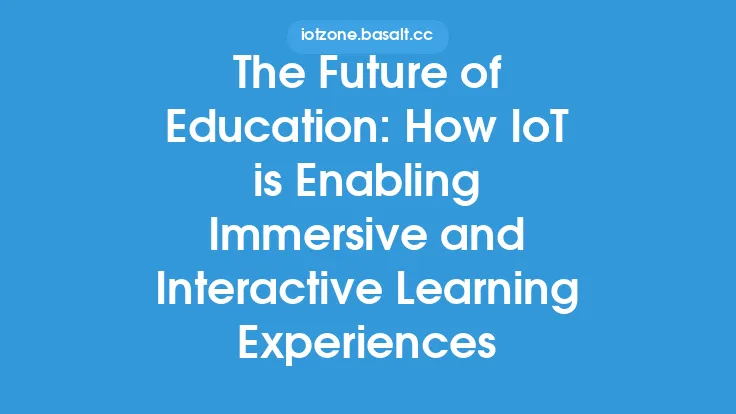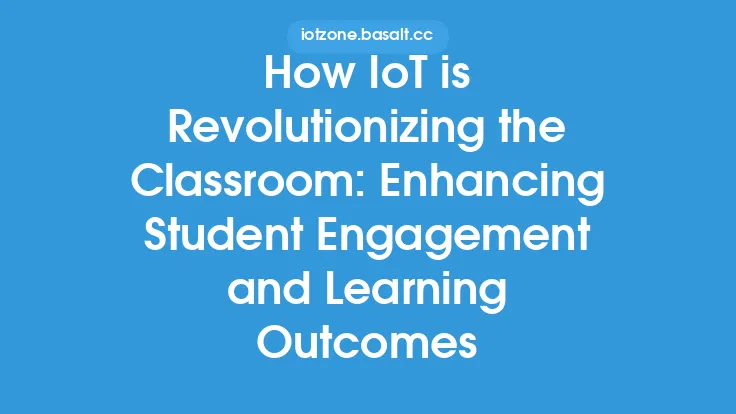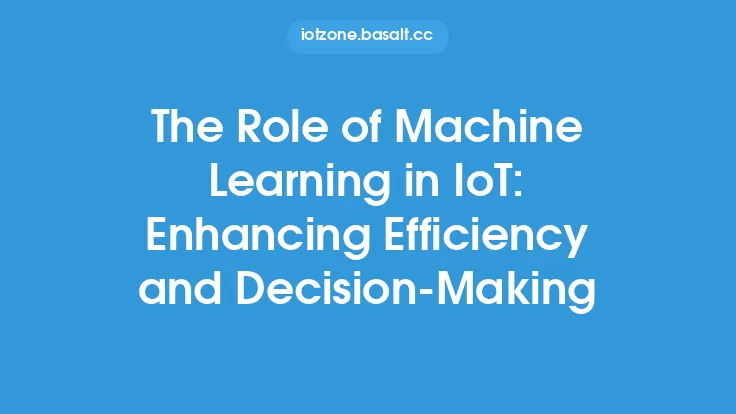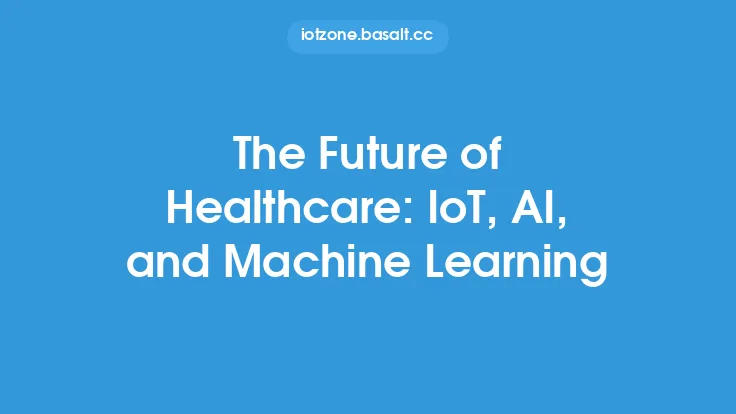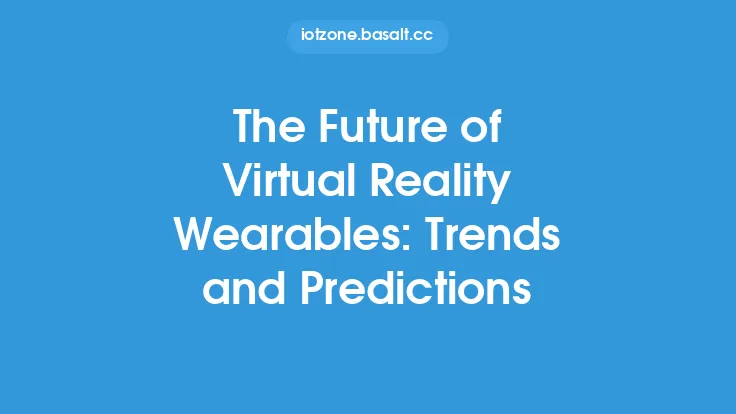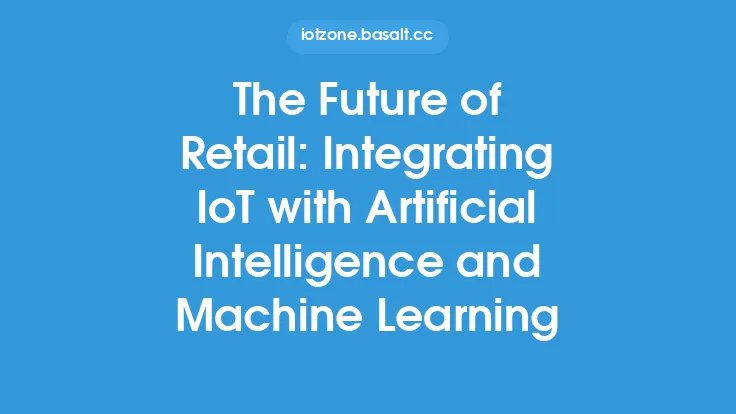The world of education is undergoing a significant transformation, driven by the integration of the Internet of Things (IoT) into learning environments. IoT, a network of physical devices, vehicles, home appliances, and other items embedded with sensors, software, and connectivity, is revolutionizing the way students learn and interact with educational content. By leveraging IoT technologies, educational institutions can create more engaging, personalized, and effective learning experiences that cater to the diverse needs of students.
Introduction to IoT in Education
IoT in education refers to the use of connected devices and sensors to create a more immersive and interactive learning environment. This can include everything from smart whiteboards and virtual reality headsets to wearable devices and mobile apps. By harnessing the power of IoT, educators can create a more dynamic and responsive learning experience that adapts to the needs of individual students. For example, IoT-enabled sensors can monitor a student's engagement levels, adjusting the difficulty of the material in real-time to ensure that the student remains challenged but not overwhelmed.
Enhancing Learning Experiences with IoT
IoT is enhancing learning experiences in several ways. Firstly, it enables personalized learning, where students can learn at their own pace and engage with content that is tailored to their individual needs and abilities. Secondly, IoT facilitates real-time feedback and assessment, allowing teachers to monitor student progress and adjust their instruction accordingly. Thirdly, IoT enables the creation of immersive and interactive learning environments, such as virtual labs and simulations, that can simulate real-world scenarios and provide students with hands-on experience. For instance, students can use IoT-enabled devices to conduct experiments, collect data, and analyze results in a virtual lab setting, reducing the need for physical equipment and minimizing the risk of accidents.
IoT-Enabled Learning Platforms
IoT-enabled learning platforms are being developed to support the creation of interactive and immersive learning experiences. These platforms use machine learning algorithms and data analytics to provide personalized recommendations and adapt to the needs of individual students. They also enable real-time collaboration and communication between students and teachers, facilitating the creation of online communities and social learning networks. For example, IoT-enabled learning platforms can use natural language processing (NLP) to analyze student responses and provide instant feedback, or use computer vision to analyze student behavior and detect early warning signs of disengagement.
The Role of Artificial Intelligence in IoT-Enabled Education
Artificial intelligence (AI) plays a critical role in IoT-enabled education, enabling the creation of intelligent tutoring systems that can adapt to the needs of individual students. AI-powered systems can analyze student data, identify knowledge gaps, and provide personalized recommendations for improvement. They can also facilitate the creation of virtual learning environments, such as virtual reality and augmented reality, that can simulate real-world scenarios and provide students with hands-on experience. For instance, AI-powered chatbots can provide students with instant support and guidance, answering questions and providing feedback on their work.
IoT Security and Privacy in Education
As IoT becomes increasingly integrated into educational environments, security and privacy concerns are becoming more pressing. Educational institutions must ensure that student data is protected from unauthorized access and that IoT devices are secure from hacking and other forms of cyber threats. This requires the implementation of robust security protocols, such as encryption and access controls, as well as regular software updates and patches. Additionally, educational institutions must ensure that students are aware of the potential risks and benefits of IoT and provide them with the skills and knowledge needed to navigate these technologies safely and responsibly.
The Future of IoT in Education
The future of IoT in education is exciting and rapidly evolving. As IoT technologies continue to advance, we can expect to see even more innovative applications of these technologies in educational settings. For example, the use of IoT-enabled wearables and mobile devices to track student health and wellness, or the creation of virtual reality field trips that allow students to explore distant locations and cultures. Additionally, the integration of IoT with other emerging technologies, such as blockchain and 5G networks, is likely to create new opportunities for innovation and experimentation in education.
Challenges and Limitations of IoT in Education
Despite the many benefits of IoT in education, there are also several challenges and limitations that must be addressed. For example, the cost of implementing IoT technologies can be prohibitively expensive for some educational institutions, particularly those in resource-constrained environments. Additionally, the lack of standardization and interoperability between different IoT devices and platforms can create technical challenges and limit the potential for innovation. Furthermore, the digital divide and issues of equity and access must be addressed to ensure that all students have equal opportunities to benefit from IoT-enabled education.
Conclusion
In conclusion, the integration of IoT into educational environments is transforming the way students learn and interact with educational content. By leveraging IoT technologies, educational institutions can create more engaging, personalized, and effective learning experiences that cater to the diverse needs of students. While there are several challenges and limitations that must be addressed, the potential benefits of IoT in education are significant, and it is likely that we will see even more innovative applications of these technologies in the future. As IoT continues to evolve and advance, it is essential that educational institutions stay ahead of the curve, investing in the technologies and infrastructure needed to support the creation of immersive and interactive learning environments.
